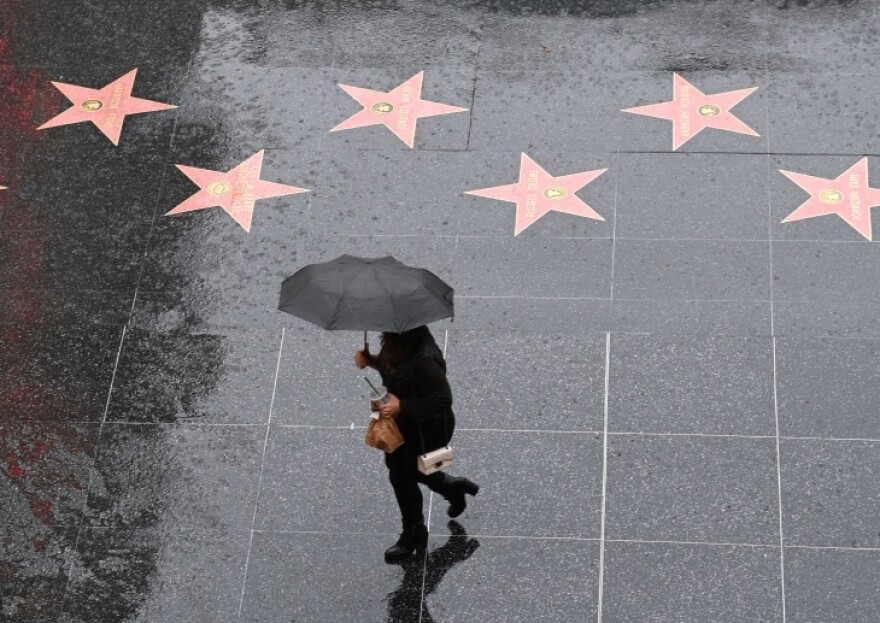Truth matters. Community matters. Your support makes both possible. LAist is one of the few places where news remains independent and free from political and corporate influence. Stand up for truth and for LAist. Make your year-end tax-deductible gift now.
March Rainfall Wasn't A Miracle, But It Helped

At the start of March, things were looking bleak for California's rain and snow totals after a pathetic January and one of the driest Februaries on record.
By the end of the month, global pandemic aside, there was reason to celebrate. Because while we didn't have a "Miracle March," it was still pretty good.
Precipitation totals in downtown Los Angeles were at 62% of normal at the start of March but increased to 94% of normal after nearly double the average rainfall fell throughout the month. Similar rainfall totals were seen across the southwestern part of the state.
California’s snowpack –- an important measurement of water availability for plants, trees and humans for the rest of the year -– is at 63% of normal as of April 7, much better than 43% at the start of March.
The Upper Colorado River Basin –- where a substantial amount of our water comes from -– is hovering around normal.
Reservoirs are at about their historical averages.
However, as of last week, parts of California are still experiencing abnormally dry or moderate drought conditions, according to the U.S. Drought Monitor. That might change after the latest report is released this Thursday.
Rain and snow is expected to continue across swaths of California through the end of the week.







